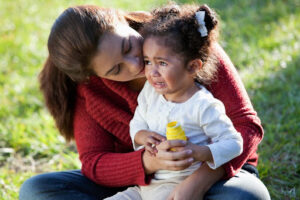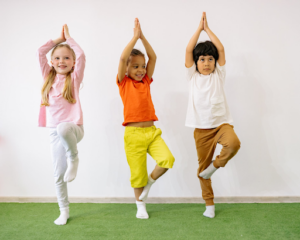
Image description: A cute little two year old hispanic girl crying, sitting in her mother’s lap. Mom is holding her, trying to comfort her. They are sitting on the grass outdoors.
What a crazy past two years this has been for everyone! With all of this unpredictability and change, your child may be experiencing some big feelings at home. If this is the case, we are here to help! Below, you can find some tips on how to empathize with your child during feelings of frustration, anger or sadness. These moments can be very challenging for primary caregivers and other caretakers, especially when additional stressors are present. Experts from the field of Clinical Psychology and Psychiatry have provided essential information to help us support both young children and adolescents through heightened emotions. These tips are short, simple and straightforward!
Read More ›→







